Today we’re going to be checking out the new FiiO BTR7 It’s selling for $199 USD.
Disclaimer: FiiO sent us the BTR7 Bluetooth DAC & AMP for the purpose of this review. As always, I am here to share my real experience with the product.
FiiO
FiiO is one of the most popular audiophile-oriented companies in the world. They design and manufacture a wide range of audio products for different price ranges. They have been in this industry since 2007 and are very popular with fans all over the world. They have entered the Bluetooth playground with solid products and today we are looking at their newest unit from the BTR series, the BTR7. We’ve reviewed and awarded a lot of FiiO equipment here at Headfonia over the years and you can read those reviews here: Headfonia FiiO Reviews.
FiiO BTR7 – Portable Bluetooth DAC & Amplifier – What’s New?
FiiO describes the BTR7 as a high-end member of the BTR series. It was introduced to the Bluetooth market with a better, more advanced audio circuit architecture than the BTR5 released a year ago. The first noticeable change is that instead of using conventional op amps, it uses a special module called THX AA-28, the fruit of a long-running R&D with the THX company. FiiO hasn’t changed anything in the DACs, which is normal. The reason is that ESS Technology has not yet developed a new DAC in the low-energy high-performance DAC range after the 9219 series. As always, I would like to emphasize the importance of implementation rather than technical specifications.
FiiO has been developing Bluetooth dacs and amps for a long time and the BTR5 was a very successful product in its class. It still is. You can read our detailed review of the BTR5 through this link. Of course, the only thing that has changed in the BTR7 is not only the amp stage. The BTR7 also has a larger battery, a new Bluetooth chipset, and a brand-new design. Before we take a closer look at all this, I’ll leave the specifications below.
DAC: ESS Technology ESS9219C x2 (Dual Config.)
AMP: THX AA-28 x2 (Two Modules)
Bluetooth Chipset: Qualcomm QCC5124 Bluetooth 5.1
USB Controller: XMOS XUF208
Supported Codecs: AAC / SBC / AptX Adaptive / AptX LL / AptX HD / LDAC
Outputs: 3.5mm Unbalanced x1 – 4.4mm Balanced x1
Wired USB DAC Mode: Native DSD up to DSD256 – PCM up to 384kHz + MQA 8x Support
Microphones: Built-in Omnidirectional Mic
Battery: 880 mAh + Qi Wireless Charging (7~9h of use)
Dimensions & Weight: Approx. 83.6×39.6×14.6mm – 68gr
BTR7’s dedicated web page can be found here. Drivers and the newest firmware can be downloaded here.
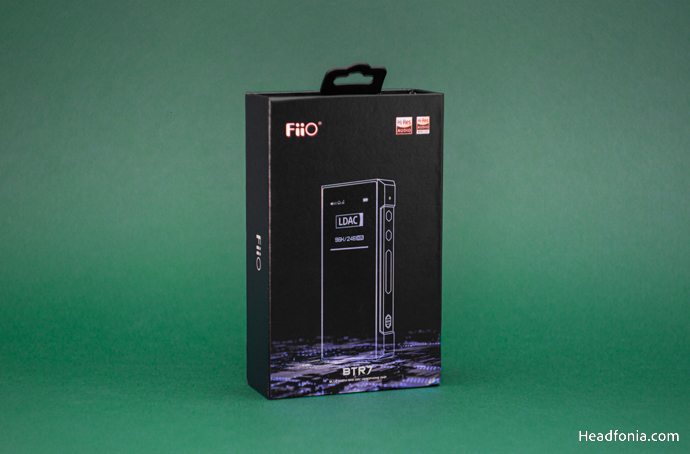
Packaging & Accessories
The BTR7’s package comes with the same design that FiiO previously used on the BTA30 Pro and BTR5-2021. The outer surface of the package is covered with a coating that gives a kind of rainbow effect. I like the package design, it is both eye-catching and elegant.
When you lift open the lid, you see the BTR7 in a foam compartment. There is a compartment right underneath this foam and the box contains the gray leather case of the BTR7. Underneath this compartment and the BTR7 is a flat box containing other accessories. Inside this box are USB-A to USB-C and USB-C to USB-C cables. There is also a user manual and a warranty card. As you can see, the accessories are quite modest. Apple users will not be able to use the product wired if they purchase this package, and FiiO’s solution is not optimal. There are 2 versions of the BTR7. Nothing is different in these versions except the package contents. FiiO distinguishes these two versions as normal and “Apple Deluxe Edition”. The “Apple Deluxe Edition” includes a Lightning to USB-C cable and a back clip, a handy add-on for securing the device in various places. This package costs $10 more than the regular package. In my opinion, these accessories should have been included in the regular package instead of releasing two separate packages.
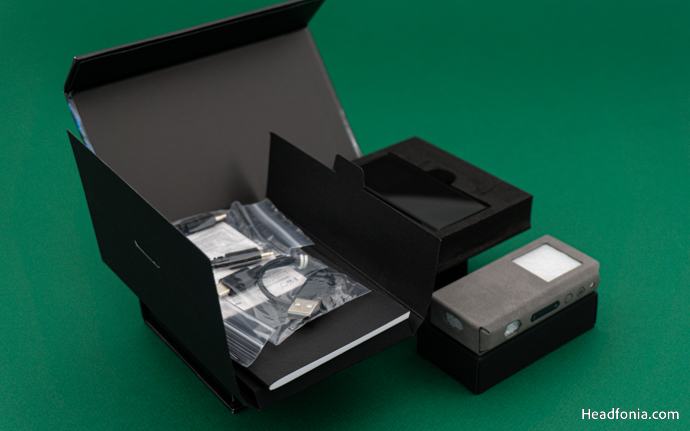
Design & Build Quality
The BTR7 features the modern, angular design that FiiO has adopted for its high-end products. We see this design in the Fiio M17 high-end DAP that my colleague Haja recently reviewed and we can even say that the BTR7 is a miniature M17, aesthetically speaking. While I find the new design bold and impressive, I find the thinner and more elegant chassis of the BTR5 more practical for a Bluetooth dongle. The BTR7 has a slightly larger and slightly thicker chassis compared to the BTR5. It is also 25 grams heavier.
Of course, even after taking all this into account, the BTR7 is a very compact device. It fits comfortably in the palm of my hand with its leather case and you can throw it in your bag, jacket, or jeans pocket and forget it’s there. Furthermore, the BTR7’s layout is very simple, which means it’s very easy to learn how to use the product. It has a 1.3inch IPS display on the front panel with 240*240 resolution and 260PPI density. It is bright and easy to read. On the top, it features two headphone outputs; 3.5mm single-ended and 4.4mm balanced. The USB-C port is located on the bottom, as per usual. All the buttons of the BTR7 are located on the right side of the device. From top to bottom, there is a power button, a multi-function button, volume buttons, and a switch that resembles Apple’s silent toggle that blocks/unblocks charging. We will discuss the controls and usage details in the next paragraphs.
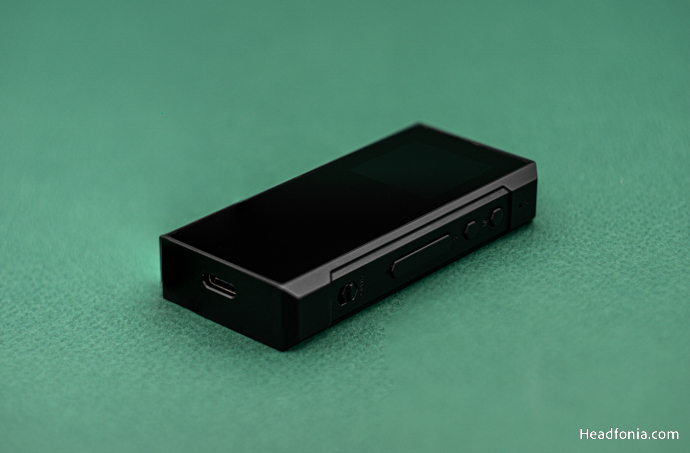
Going back to the design, the front and back of the device are covered with tempered glass and glossy, as we are used to from the BTR series. On the back, we see the THX and MQA logos and the HiRes Wireless and HiRes logos of the Japan Audio Society (JAS). There is no lettering on the front. In addition, the microphone is located just above the power button. As we have experience with previous BTR devices, we do not recommend using the device without a case. The front and back panels are not very resistant to scratches. In addition, if you plan to carry the device with you all the time, we recommend that you buy a smartwatch screen protector for the screen to protect it completely.

In general, it is not difficult to observe that the changes made were mandatory, because the new THX modules, although developed and optimized for this device, consume more power than traditional solutions, and the fact that the battery is about 330mAh larger than the BTR5 does not cause a significant improvement in usage time. All in all, it’s nice to see that FiiO has taken the design aspect of the M17 and applied it to the BTR series. Finally, the materials, anodized finish, and sockets used by FiiO in the BTR7 are of very high quality. We congratulate them for their consistency in this regard.
The review continues on Page Two, after the click HERE or by using the jump below.
Page 2: Amplitude & Chipset, Features & Control
Page 3: Wireless Sound Performance, Wired Sound Performance, BTR5-2021 Comparison, Last Words






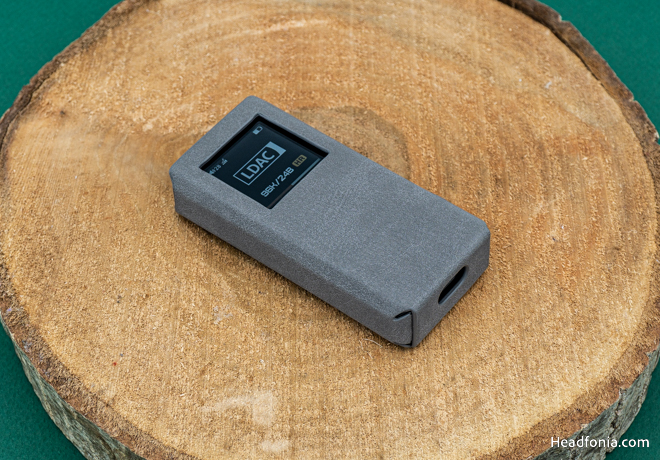
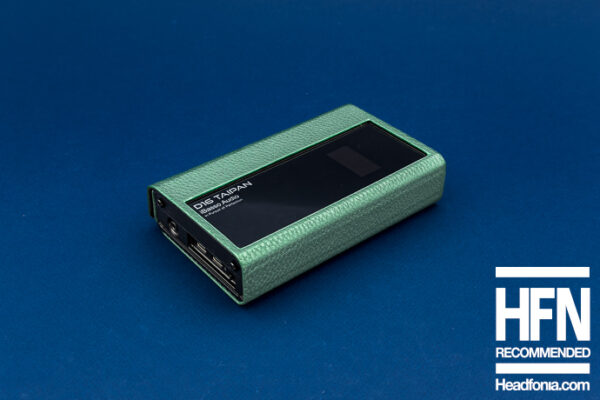
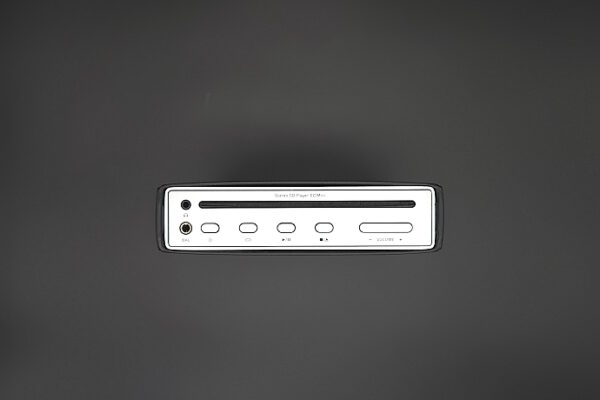
Mark Schneider
Did you mean BTR5-2021?
“Of course, this all depends on the power demands of the headphones you have. If you have a full-size, hard-to-drive headphone, the power provided by the UP5-2021 may not be enough for you, in which case the BTR7 would be a better option.”
Claudio
I think the BTR7 is an improvement of the BTR 5 (first version). I also think is more enjoyable to the old DAPs like fiio m6, Fiio m9 and the M11 (too bright for me). Fiio is doing a good job with their new releases. I own the m17 (wonderfull DAP) and the K7 (great sound too).
Andrius
Buggy device. Stuttering sound on S8+ tablet
Rick Hussey
I use my BTR7 with the Sennheiser HD598sr and KZ hbb PR2 planar magnetic iems. I use a 4.4mm balanced cable on both. The combo sounds utterly fantastic.